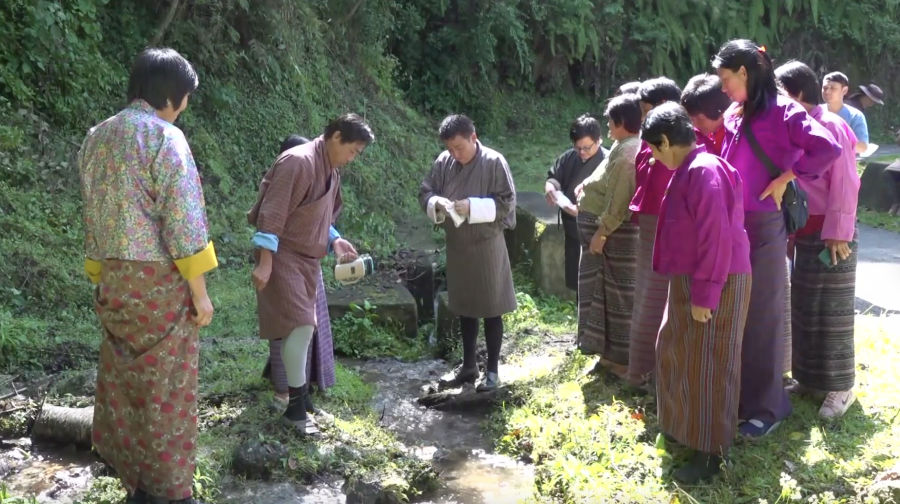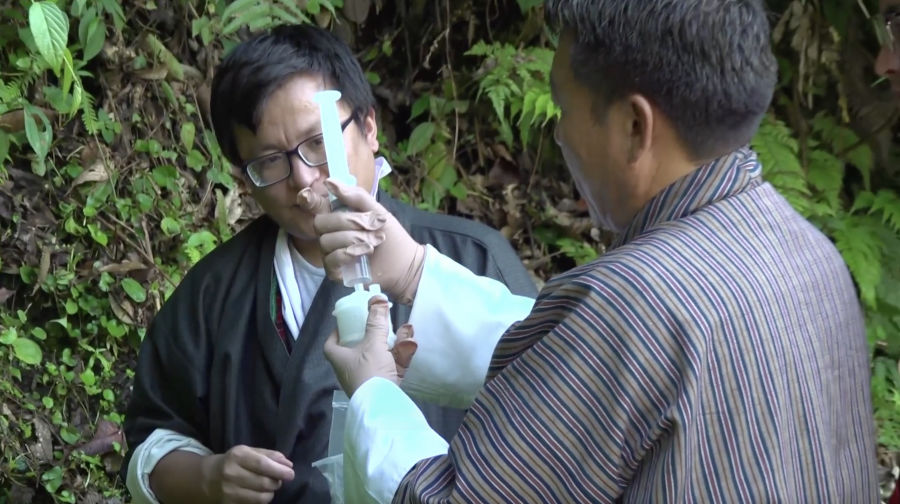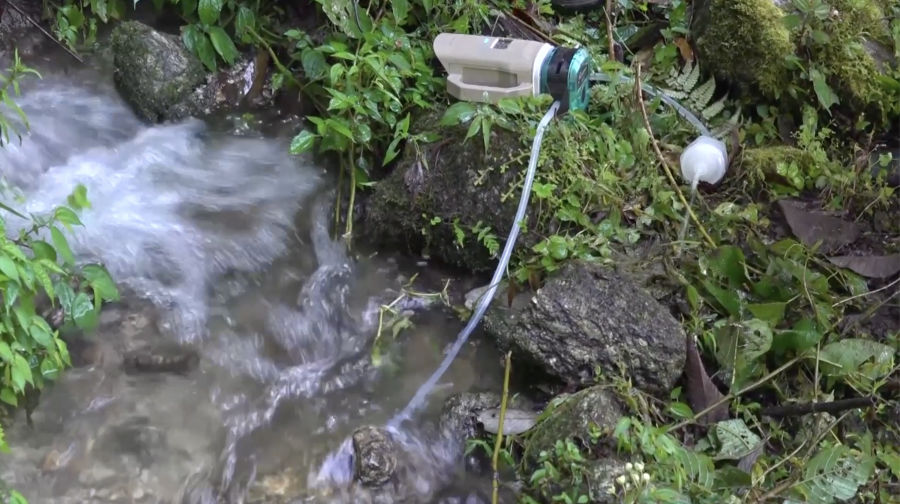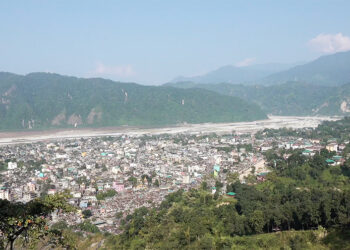 When people understand what eDNA is, they become more involved in protecting their environment. eDNA, or environmental DNA, is like tiny traces that animals leave behind in nature. For example, when an animal drinks water, walks on the ground, or sheds hair or skin, small bits of its body remain there. With the new technology in Bhutan, scientists can now detect wild animals using eDNA testing. To raise awareness, a lecturer from the College of Natural Resources is meeting with communities in Punakha to share the benefits of eDNA for wildlife conservation.
When people understand what eDNA is, they become more involved in protecting their environment. eDNA, or environmental DNA, is like tiny traces that animals leave behind in nature. For example, when an animal drinks water, walks on the ground, or sheds hair or skin, small bits of its body remain there. With the new technology in Bhutan, scientists can now detect wild animals using eDNA testing. To raise awareness, a lecturer from the College of Natural Resources is meeting with communities in Punakha to share the benefits of eDNA for wildlife conservation.
The people of Yorbo Chiwog in Goenshari Gewog attended a training on collecting and handling water samples.
According to Karma Sherub, a lecturer at the College of Natural Resources, currently pursuing his PhD in Switzerland, this is not an ordinary water sample collection.

He said that water is the best way to collect and filter eDNA. The process uses water pump, tube, capsule and battery to gather the sample efficiently.

After collecting the sample in the capsule, a special liquid is added to preserve the eDNA. Karma Sherub said the samples must be handled carefully to avoid contamination, which can give wrong results.
The samples are then sent to the lab at the College of Natural Resources for analysis. There, they take out the DNA and use PCR to make millions of copies so they can study and find out which animals were in the area.
For sequencing, the samples are sent to Switzerland. Sequencing is the process of identifying which animal species are in the sample.
Unlike camera traps and field surveys that take time and effort, eDNA testing gives quicker results. Simply put, eDNA helps identify which wild animals live in the area where the water sample was collected.
“I have been working on the mammals for past three years. Till now, we have achieved 90 per cent of detection, which has been detected by the camera traps. So, till now it has been very successful with the eDNA for detecting the animals, wildlife species,” said Karma Sherub.
“We have learned how to collect water samples for eDNA testing. If anyone asks us to collect water samples for eDNA testing in the future, we can do it easily using the knowledge we gained from the training,” said Ugyen Dema, Resident, Yorbo Chiwog, Goenshari Gewog, Punakha.
“We do not see tigers in our nearby forest, but we believe this technology will definitely help us detect and track animals in our locality. We have gained a clear understanding of how these technologies work. Additionally, there is a sacred place above our village that attracts visitors from various places. People from Lunana also travel through this area, so this knowledge will help us raise awareness among them about the presence of wild animals for their own safety,” said Leki, Resident, Yorbo Chiwog, Goenshari Gewog, Punakha.
Bhutan’s first eDNA lab opened at the College of Natural Resources in April this year, allowing wildlife analysis to be done locally.
Developed by ETH Zurich, with support from WWF Bhutan, Bhutan for Life and Bhutan Trust Fund, the lab will not only reduce costs and time to generate results, it will also build up local capacity and support ongoing biodiversity monitoring in Bhutan and the region at large.
“Recently, we established a clean lab in the College of Natural Resources, and here right now, we can do the extraction of DNA and also the PCR. So, for sequencing, we are sending it outside. So, right now we are sending to the microsynt, which is located in Switzerland, and we are getting the result in three to four weeks,” said Karma Sherub, PhD student, ETH Zurich, Switzerland.
The researchers said such public training helps people learn and understand which animals live in their area, improving safety for themselves and their community. It also teaches locals how to collect samples, making eDNA analysis more efficient. He plans to expand the training to Gasa as well.
Changa Dorji, Punakha
Edited by Sonam Pem







